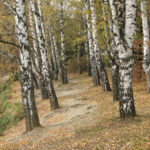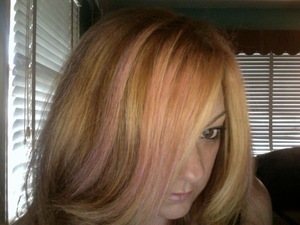Skateboarding is becoming a very popular sport, pushing the limits of gravity and balance on streets and sidewalks everywhere. However, a fairly new type of skateboarding is becoming popular, the art of longboarding. A longboard is exactly what it sounds like… a longer skateboard. It is used for cruising, transportation, and downhill runs. This DIY project is designed to guide you through each and every step of designing, making, and decorating your OWN unique longboard! Let’s get started…
What you’ll need:
– (2) 1/4″ thickness pieces of plywood (preferably birch or Baltic birch)
* It doesn’t matter what the other dimensions are, as long as your board is a little smaller then the piece of wood
– Gorilla Glue OR Titebond III Wood Glue
– Jigsaw or Bandsaw
– Sandpaper and/or Orbital Sander
– A couple dumbbells, bricks, or other similar heavy objects
– Clamps OR drywall screws
Step 1: Design
Although you can use ANY shape you want for your board, one of the most popular, and stable, designs to use is a traditional “oval”. Trace your oval, or whichever shape you prefer, onto one piece of plywood. Time for Step 2…
Step 2: Gluing
On the opposite side of the piece of wood with the template traced on it, spread glue, making sure to not miss any spots. Stick that board to the other board, and it’s time for clamping…
Clamping method #1
If you have clamps, this step is very easy. Apply as many clamps as you want along the edges and inside the area you traced, to hold the two layers of plywood together.
Clamping method #2
If you do not have clamps, don’t fret. A box of drywall screws and an electric drill will work just as well. Drill a screw every 1/2 or 1 inch along the outside of the template… about 1/2 inch from the perimeter of the template. This works just as a clamp would…holding the two pieces of plywood together.
Step 3: Set the curve
Most, if not all, longboards have a curve built into them. When you are not standing on the board, the curve is upwards. Therefore, when you ARE standing on the board, the board appears flat. This adds strength and stability to the board. Once you have the clamps/screws on the board…set the board between two garbage cans, chairs, etc. Put a brick, dumbbell, or other slightly heavy object about where your front foot will go. Since the curve will be going down…this will be the bottom of your board.
Step 4: Cutting and Sanding
After the glue is dry, take off the clamps/screws. Cut out the board along the template you traced, and sand the edges at a 45 degree angle. It should start looking like a skateboard now!
Step 5: Finishing
You will want to apply a finish to your board to protect it in the outside world. First, sand your whole board. Then…apply a layer of Polyurethane Varnish to the board. Sand the board lightly, and repeat 3 or 4 times. Every time you do this, the board should be smoother. Once you are satisfied with the varnish…it is time to decorate.
Step 6: Decorating
Now that the board is finished, it is time to decorate it! Use sharpies, waterproof markers, paint, etc. to make a cool design on the bottom of the board. Once you put the design on… apply ONE layer of polyurethane varnish to finish it off.
Congratulations! You have now made a longboard! Just attach trucks and griptape, and your board is ready to cruise the streets!




